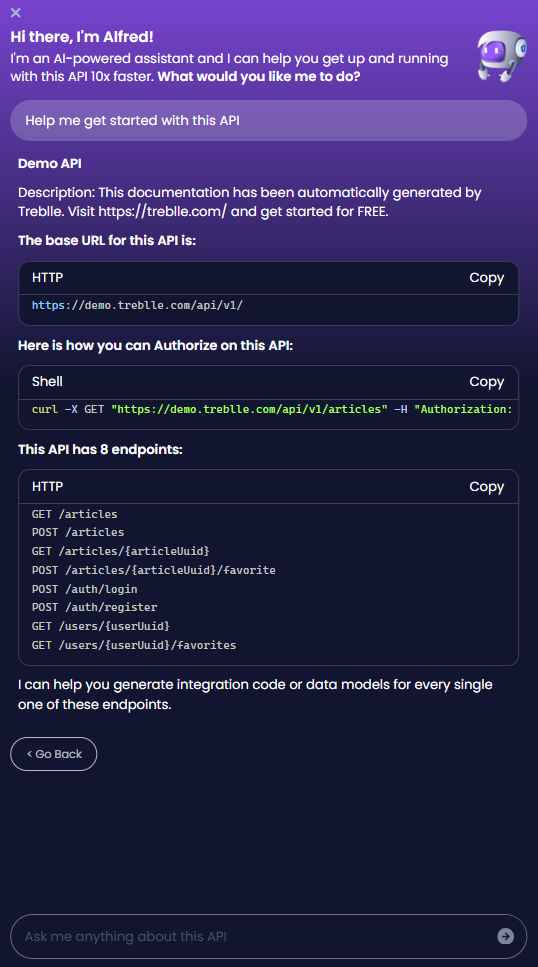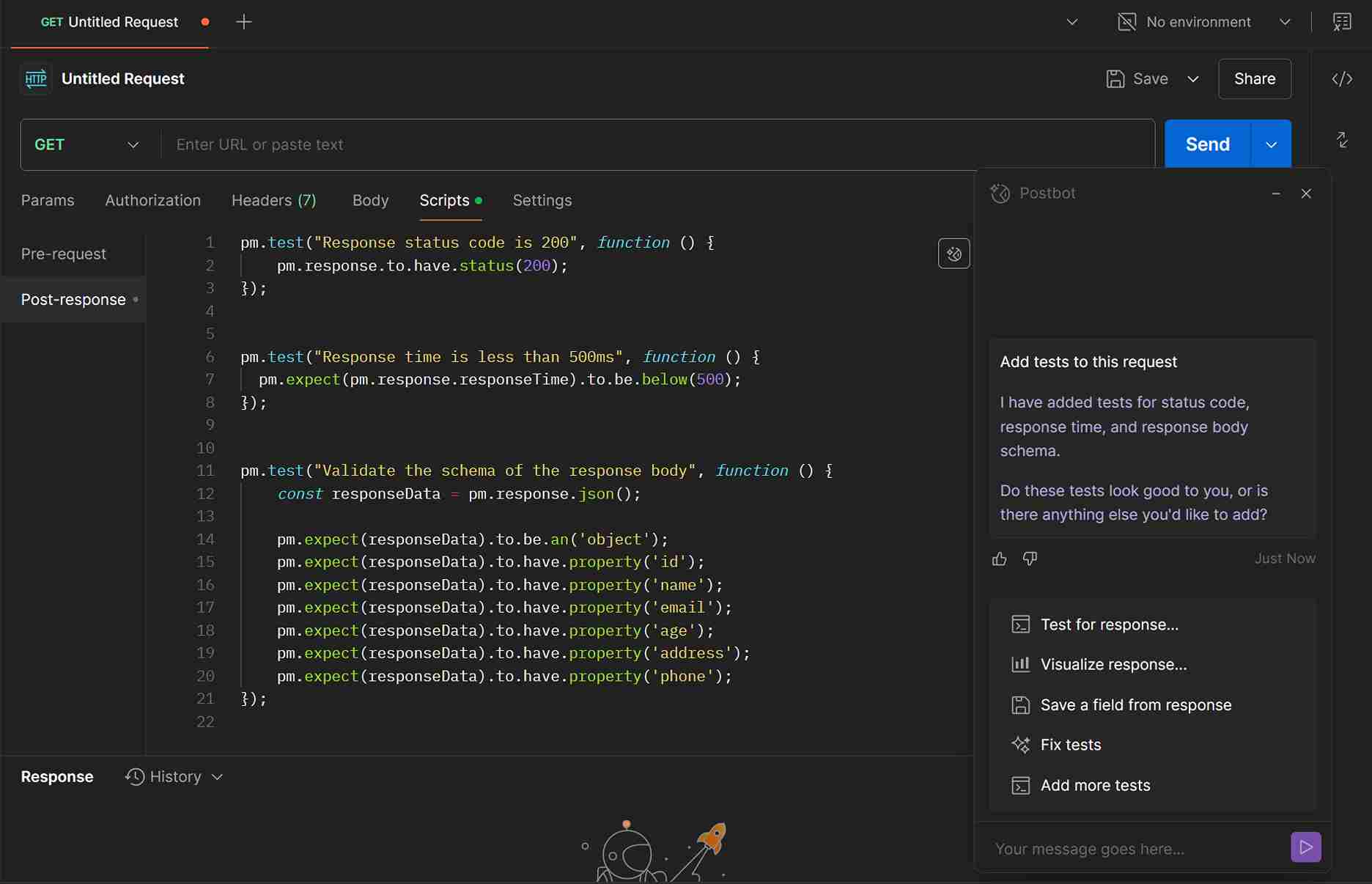AI | Feb 12, 2025 | 8 min read | By Rahul Khinchi

Rahul Khinchi is a Developer Advocate at Treblle, where he focuses on improving API workflows and developer experience. He writes technical content on API observability, security, and governance, and builds open-source tools to demonstrate real-world API use cases. Rahul has spoken at developer meetups and universities, and previously held developer advocacy roles at Syncloop. He was selected for Google Summer of Code in 2022 and has led community initiatives supporting thousands of beginners in open source.
• Overview: Learn how AI API Assistants are transforming API development by automating key tasks like monitoring, debugging, documentation updates, and integration support.
• Why It Matters: AI tools reduce manual work, help developers troubleshoot faster, and improve API efficiency.
• Research Insights: We discuss key studies that highlight how AI improves API usage, from real-time monitoring to context-aware assistance.
• Tool Comparison: A breakdown of Alfred AI vs. Postbot, comparing their features, strengths, and best use cases.
• Takeaway: By the end, you’ll understand how AI API assistants can streamline your workflow and help you choose the right tool for your needs.
As a Junior Developer Advocate at Treblle, I’ve spent the past year observing how API development has evolved. One major shift I’ve noticed is the increasing use of AI-driven tools to streamline API workflows.
These tools are transforming how developers manage API requests, debug issues, and keep documentation up to date. In this post, I’ll break down what an AI API Assistant is, how it helps developers, and compare two popular options—Alfred AI and Postbot—to help you choose the right tool for your workflow.
Want smarter, AI-powered API docs that guide developers instantly?
Alfred adds an AI assistant to your docs so devs get answers in seconds.
Explore Treblle
Want smarter, AI-powered API docs that guide developers instantly?
Alfred adds an AI assistant to your docs so devs get answers in seconds.
Explore Treblle
An AI API Assistant is a machine-learning-powered tool that helps developers optimize API interactions. It automates tasks like:
• Monitoring API traffic for anomalies and performance issues
• Auto-updating documentation when API changes occur
• Providing code suggestions to prevent errors
• Assisting with API integration by generating examples and templates
Instead of manually tracking API performance or debugging errors, these tools help by analyzing API data in real time and offering actionable insights.
When I say “analyze,” I mean that it helps sift through the data that our APIs generate, such as errors, performance metrics, and even unusual access patterns.
Over time, I’ve explored both practical feedback and academic research on AI’s role in API development. Here are three key studies that highlight the impact of AI API assistants:
A Wizard of Oz experiment involved 30 professional programmers interacting with a simulated virtual assistant. The research team meticulously tracked conversations, noting how developers sought information, clarified misunderstandings, and refined API calls.
What stood out in this study was its emphasis on context-aware dialogue. Many developers needed more than just one-off responses; they required assistants that could adapt to evolving conversations, clarify uncertainties, and assist with troubleshooting.
The research highlights how AI API assistants should not only provide answers but also understand intent, detect confusion, and proactively guide developers toward the correct API usage.
This research examined how AI-powered tools function in real-world API debugging and integration scenarios, rather than just responding to simple, predefined requests. The study found that:
• Developers frequently repeat queries when troubleshooting, trying different approaches before reaching a solution.
• AI assistants need to recognize patterns in developer behavior and suggest more refined, context-aware responses.
• A rigid AI assistant that provides static answers is less effective than one that dynamically adjusts based on user interactions.
The takeaway here is that AI API assistants should not be designed as single-response tools. Instead, they should behave like interactive partners, recognizing patterns in developer queries, detecting hesitation, and offering iterative guidance.
In modern microservice architectures, API interdependencies can obscure the root cause of performance issues. This study explored machine learning techniques for anomaly detection in API traffic and found that AI can:
• Identify unusual API request patterns that could indicate security threats, performance bottlenecks, or integration failures.
• Reduce debugging time by providing targeted alerts instead of requiring developers to sift through logs manually.
• Improve system reliability by flagging potential problems before they escalate into full-scale failures.
This research reinforces a crucial point: AI API assistants can play a proactive role in system stability by continuously monitoring API traffic and alerting developers to potential risks before they impact users.
From monitoring API performance to improving documentation, AI API assistants offer several key benefits:
1. Real-Time Monitoring & Alerts
• Detect unusual API request patterns, flagging spikes in errors or slow response times.
• Notify developers before issues escalate, helping with faster debugging.
2. Automatic Documentation Updates
• Keep API documentation accurate without manual edits.
• Update OpenAPI specifications as changes occur, reducing confusion.
3. Code Suggestions & Debugging Assistance
• Analyze code snippets interacting with APIs and highlight potential errors.
• Suggest fixes or optimizations to improve reliability.
4. Integration Support
• Generate API call examples and templates, ensuring consistency in coding practices.
• Help teams quickly onboard new features or third-party services.
Want smarter, AI-powered API docs that guide developers instantly?
Alfred adds an AI assistant to your docs so devs get answers in seconds.
Explore Treblle
Want smarter, AI-powered API docs that guide developers instantly?
Alfred adds an AI assistant to your docs so devs get answers in seconds.
Explore Treblle
AI API assistants vary in functionality depending on the tool. Below is a feature comparison between Alfred AI (by Treblle) and Postbot (by Postman) to help you decide which one fits your needs.
| Feature | Alfred AI (Treblle) | Postbot (Postman) |
|---|---|---|
| Best For | API documentation, monitoring, and real-time assistance | API testing and automation within Postman |
| Code Generation | Generates SDKs, test scripts, and integration code based on API docs | Provides code snippets using natural language prompts |
| Documentation | Auto-updates OpenAPI documentation | Creates documentation on demand |
| Data Models & Mock Data | Generates models & mock data for development & testing | Focuses more on visualizing API responses |
| Debugging Support | Analyzes API issues, suggests fixes, and improves API quality | Offers inline debugging suggestions & test editing assistance |
| Integration & Deployment | Works within Treblle SDK & developer portals | Embedded in Postman for seamless API testing |
| Real-Time Assistance | Provides instant feedback, explanations, and code generation | Uses NLP to offer interactive testing & documentation updates |
| Data Security | Does not store API data; accesses API docs for assistance | Operates within Postman’s secure framework |
Want a deeper dive? Check out our full Alfred AI vs. Postbot comparison for a detailed breakdown of their features, strengths, and best use cases.



If you want to know more, you can check Postbot's documentation.
As a Junior Developer Advocate, I’ve learned that the most valuable tools aren’t just packed with features—they actively eliminate repetitive work and allow developers to focus on writing great code.
AI API Assistants do exactly that by automating time-consuming tasks like monitoring API performance, updating documentation, and troubleshooting errors.
Instead of manually digging through logs or fixing outdated API references, developers can rely on AI to handle these tasks efficiently, leading to faster development cycles and fewer roadblocks.
The research we explored in this post highlights how AI-driven API assistants improve workflows by offering real-time insights, adaptive support, and proactive issue detection.
Whether through context-aware dialogue, intelligent API monitoring, or automated documentation, these tools are changing the way developers interact with APIs.
Different assistants offer different strengths—Postbot is well-suited for Postman users, while Alfred AI provides a more flexible solution for developers who need real-time API monitoring and documentation updates integrated into a custom developer portal.
With the increasing complexity of modern APIs, AI API Assistants are no longer a luxury—they’re becoming a necessity. Development teams need tools that help them move faster, reduce errors, and maintain high-quality API documentation without extra manual effort.
As AI continues to evolve, these assistants will only become more advanced, making them an essential part of every developer’s workflow.
Want smarter, AI-powered API docs that guide developers instantly?
Alfred adds an AI assistant to your docs so devs get answers in seconds.
Explore Treblle
Want smarter, AI-powered API docs that guide developers instantly?
Alfred adds an AI assistant to your docs so devs get answers in seconds.
Explore Treblle
 AI
AIReducing Time to First Integration is more than speed; it’s a key metric. In this post, discover 6 proven methods, backed by AI and observability, to simplify onboarding, cut friction, and lower integration time without sacrificing reliability.
 AI
AIModern APIs are powerful but difficult to integrate. Poor documentation, fragile code, and tool sprawl slow teams down. This article explores how AI is transforming API integration—automating onboarding, testing, and governance to boost speed, reliability, and scale.
 AI
AILLMs are calling your APIs, but they don’t always follow the rules. From subtle JSON mismatches to silent data pollution, probabilistic outputs can quietly break your backend. Here’s why contracts matter, and how to enforce them in real time.